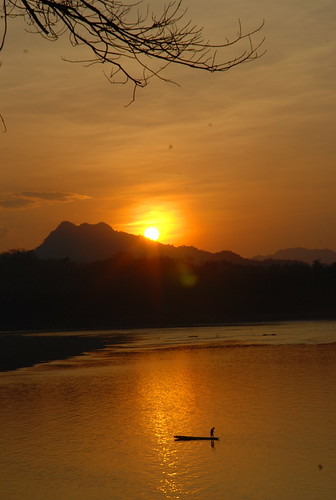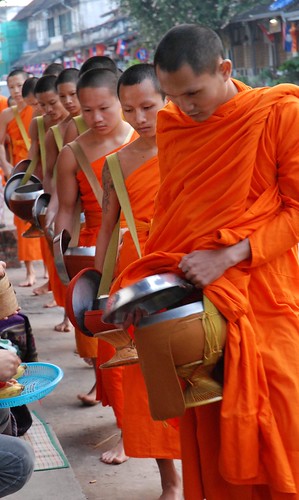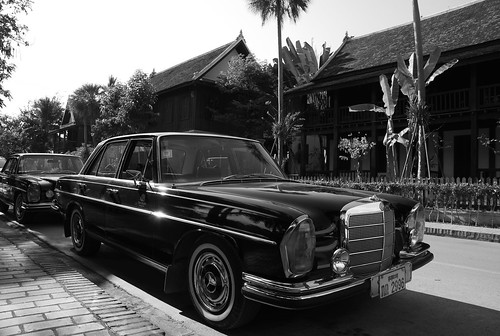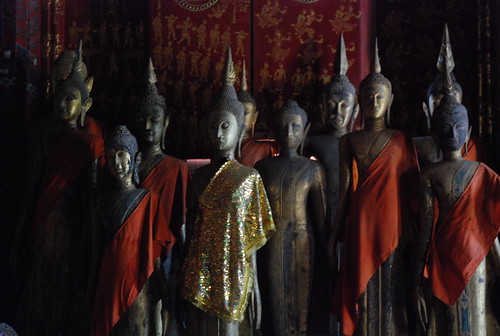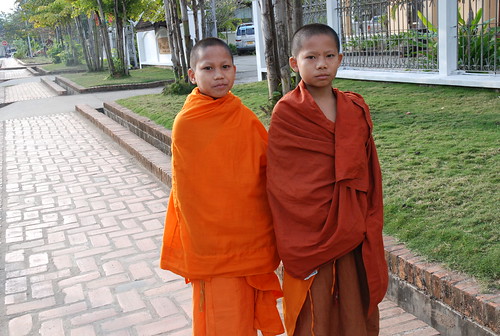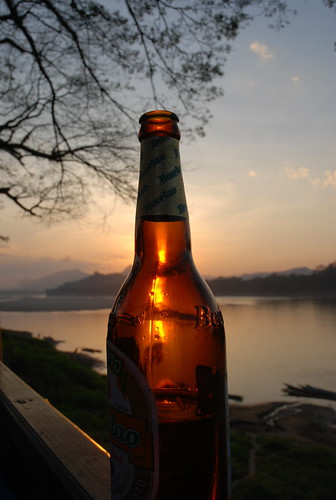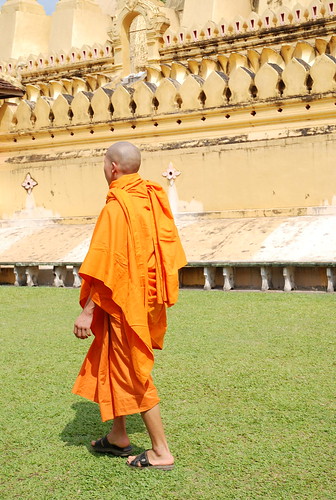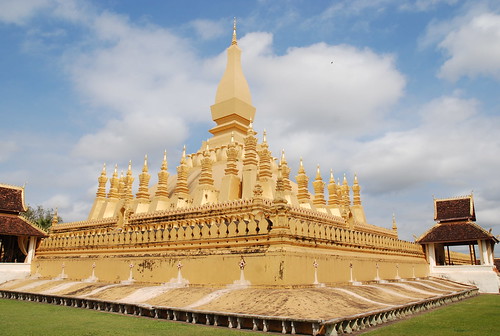The pace is slow, relaxed and life-like. The air smells raw and natural. People are honest, courteous and chilled-out. Though the place is fast developing, like most countries in this part of the world, it has so far managed to keep its values and traditions intact. You can still see monks, at dawn each morning, walking barefoot through the silent streets of Luang Prabang, with their alms bowls accepting food. It is a strict ritual they are expected to follow diligently. You can still cross the river on fragile bamboo bridges. You can still meet souls that value principles over money.
Very few places on this planet have a unique mix of old charming roads, beautiful architecture, great food and welcoming people, while not swamped with tourist buses.
Its main historic center - Luang Prabang was hit hard in 1893 after attacks from the Chinese and the king sought protection from the French, whose grand European architecture still stands alongside the existing temples. The last king lost his throne, as well as his life, when the communists seized control of the French colony. After all the dust was settled, Luang Prabang was open to tourism only two decades ago and was bestowed with UNESCO world heritage status in 1995, which has helped the city to preserve and enhance its old charm as well as gain recognition with international travelers.
There are plenty of places to experience the colonial past and the French influence. Many restored colonial buildings - that includes the former royal palace, former jail and detention center, a French hospital- all of which have transformed into "experience of a lifetime" hotels.
Take a stroll on the banks of Mekong, laze around in small cafe across the Nam Khan river and then finally spend the evening savoring Mekong sea weeds and Lao beer, watching the sun shy away into the mountains across the Mekong, splashing beautiful orange strokes in the sky.
It was also interesting, though it may come as a surprise to many people living in fast-paced, concrete verticals of large metro cities, that these people are truly happy even with their minimal lifestyle. Their faces radiating contentment and gratitude to this wonderful thing, called life.
Though i could only visit Vientiane and Luang Prabang, I am sure there are other interesting places to visit in Laos. Some recommendations for people interested in food
Vientiane
Amphone - Probably the best restaurant for Lao cuisine. The setting and decor is simple but elegant. The menu small but interesting enough, even for Anthony Bourdain who picked up this restaurant to introduce Lao cuisine in his show "No reservations"
La Silapa - Small, elegant and romantic French restaurant with some classic French food.
Jomo Bakery - Probably the most popular hang out for all tourists. Bakery items are average but have an extensive menu, and just the casual ambiance is good enough to hang out for few hours every day
Luang Prabang
L'elephant - Definitely a place to enjoy Lao as well as French food.
Dyen Sabai - Some interesting traditional Lao food but just the journey to this restaurant as well as the location makes it special.
3 Nagas and mango tree - Decent food but great ambiance, especially if you get a table under the mango tree
Nameless - There is one small joint in front of L'elephant which serves one of the best noodle soups.
Countless street-side stalls - The best Lao food is served in countless small restaurants that you won't find in lonely planet. People are friendly and happy to cook anything that you like.
Put Laos on your bucket list and visit this natural beauty before mankind spoils it, with its quest of erecting buildings that touch the moon.
